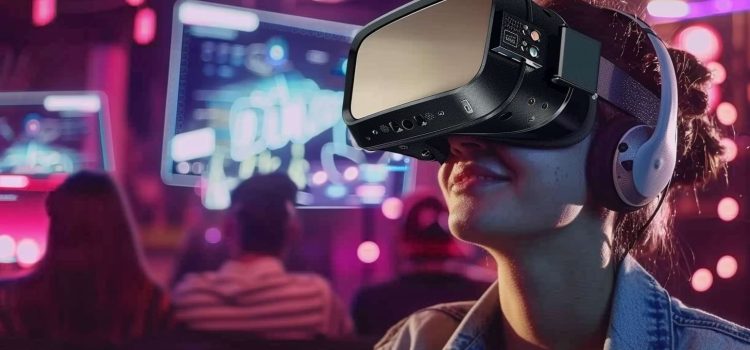
Introduction
Virtual reality (VR) is quickly changing the world of filmmaking. It’s not just a fun new gadget—VR is helping filmmakers tell stories in new and exciting ways. This article will explore how VR is influencing films, from the way stories are told to how movies are made and how audiences experience them.
A Brief Look at Filmmaking History
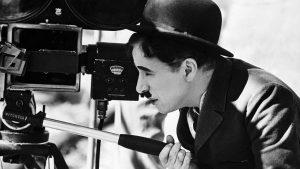
Filmmaking has changed a lot over the years. We’ve gone from simple black-and-white films to the colorful, high-tech movies we see today. New technologies like CGI (computer-generated images) and digital cameras have made filmmaking faster and cheaper. Now, VR is taking things even further by creating a whole new experience for both filmmakers and viewers.
How VR Changes Storytelling

In traditional films, the audience watches a story from a fixed point of view. They see the action from a certain angle and can’t move around in the scene. But VR changes all of that. With VR, viewers are inside the story. They can look around, interact with characters, and even explore the environment. This makes the experience feel much more real and personal.
Movies like The Martian VR Experience and Notes on Blindness are examples of how VR can tell stories in a completely new way. Instead of just sitting and watching, the audience becomes part of the experience.
VR’s Influence on Movie Production
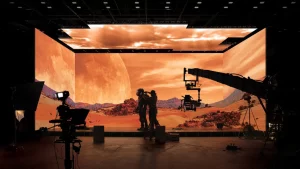
VR isn’t only changing how stories are told; it’s also changing how they are made. In the past, filmmakers had to build physical sets, hire actors, and shoot scenes on location. But VR allows filmmakers to create virtual sets and scenes that can be viewed in real-time. This makes filming faster and cheaper.
Virtual Production: One of the most exciting ways VR is being used is called virtual production. This is when filmmakers use VR to create virtual environments that actors can interact with while shooting. For example, the TV show The Mandalorian used VR to create virtual worlds, replacing traditional green screens with giant screens. This allowed actors to see their environment as they acted, making their performances feel more natural.
How VR Changes the Way We Watch Movies

Another way VR is transforming filmmaking is through how audiences experience films. Traditionally, people sit in a theater or at home and watch a film on a screen. But with VR headsets, viewers can step into the world of the movie. They can look around and feel like they are actually inside the film.
This kind of immersive experience allows for a deeper emotional connection to the story. Instead of just watching a movie, viewers become part of it, which could change the way we watch films in the future.
How VR is Changing the Way We Experience Movies
In the past, we watched movies from a distance, sitting in a theater or in front of a TV. But with VR, viewers can step into the movie itself. They can look around and interact with the environment, making the experience feel real. It’s like being a part of the story, not just watching it. This level of immersion is one of the key reasons why VR is exciting for filmmaking and film lovers alike.
Virtual Reality and Interactive Films
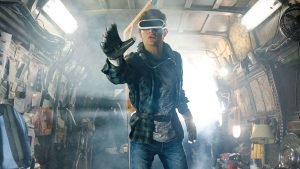
One of the most exciting developments in VR filmmaking is the rise of interactive films. These are films where viewers can make choices that affect the story. For example, viewers might decide what a character does next or how a scene plays out. This kind of storytelling allows audiences to shape the narrative and makes each viewing experience unique. As technology continues to improve, we may see more interactive films in the future.
VR’s Impact on Film Production
Film production has always been expensive and time-consuming. VR is helping filmmakers reduce some of these costs. Instead of building large physical sets or traveling to different locations, filmmakers can create everything they need virtually. This makes production faster and allows for more flexibility in how scenes are shot. Filmmakers can even change the environment in real-time, giving them more control over the story.
VR Filmmaking and the Role of Actors
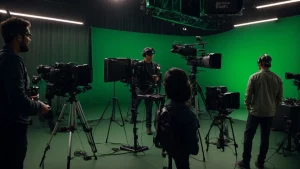
VR is changing how actors perform in films. Instead of just acting on a set, actors now have to interact with virtual environments and characters. This requires new skills and a different way of performing. VR filmmaking often uses motion capture technology to track the actor’s movements, allowing them to be placed into virtual worlds. This makes the performance feel more lifelike and real.
The Growth of VR Filmmaking Equipment
As VR becomes more popular, the equipment needed to create VR films is also improving. VR cameras, which capture footage in 360 degrees, are becoming more affordable and easier to use. Special VR headsets are also being developed to provide a better viewing experience. As the technology continues to grow, it will become easier for filmmakers to create high-quality VR films without the need for expensive equipment or technical expertise.
The Emotional Connection with VR Films

One of the unique aspects of VR filmmaking is how it creates an emotional connection between the viewer and the story. When you are inside the movie, it feels more personal. You can look around, interact with characters, and even feel like you’re a part of the action. This deeper level of involvement can make you feel more connected to the story and the characters, increasing the emotional impact of the film.
The Potential of VR in Education and Training
Beyond entertainment, VR filmmaking has the potential to be used in other areas like education and training. Imagine learning about history by exploring a VR recreation of an ancient city or learning how to perform surgery in a virtual hospital. VR can make complex subjects easier to understand by giving people hands-on, immersive experiences. As VR technology continues to develop, it could become a powerful tool in education and other industries beyond film.
VR’s Role in Horror and Adventure Films

VR is especially powerful in certain movie genres, like horror and adventure. In horror films, VR can make the viewer feel like they’re trapped in a scary situation, making it even more intense. In adventure films, VR can allow viewers to explore fantastical worlds and experience epic journeys as if they were really there. This kind of immersion can completely change how people experience these genres, making them much more exciting and thrilling.
The Growing Interest in VR Film Festivals
As VR filmmaking becomes more popular, there is a growing interest in VR film festivals. These festivals allow filmmakers to showcase their VR projects and give audiences the chance to experience them. These events are helping to bring attention to VR as a legitimate form of filmmaking. Many people who attend these festivals are amazed by the potential of VR and eager to see how it will continue to evolve in the future.
VR Filmmaking and Accessibility
VR filmmaking also has the potential to make films more accessible. For example, VR can help people with disabilities experience movies in new ways. Those who are deaf or hard of hearing might benefit from films that have visual storytelling elements, while people who are blind or visually impaired could experience stories in a more immersive and sensory way. By creating more inclusive experiences, VR could make movies more enjoyable for a wider audience.
VR as a New Tool for Filmmakers
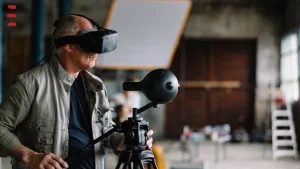
For filmmakers, VR is an exciting new tool that can open up endless possibilities. It allows directors and writers to push the boundaries of traditional storytelling and explore new creative techniques. Filmmakers can experiment with different perspectives and use VR to bring their wildest ideas to life. As the technology improves, VR could become an essential part of every filmmaker’s toolkit.
Challenges of VR Filmmaking
Even though VR offers many new opportunities, it also comes with some challenges. One of the biggest issues is the cost. High-quality VR filming requires expensive equipment like special cameras, motion capture systems, and advanced software. It’s also hard to make VR films that everyone can enjoy. Some people experience motion sickness or discomfort while using VR, which could limit how many people want to watch VR films.
Another challenge is the limited audience. Even though VR headsets are becoming cheaper, they are still not as common as TVs or computers. This means fewer people have access to VR movies, making it harder to reach a large audience.
The Future of VR Filmmaking
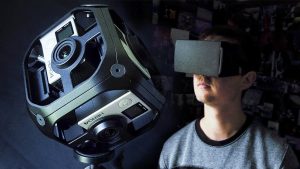
Despite these challenges, the future of VR in filmmaking looks very promising. As technology continues to improve, VR will likely become easier and cheaper to use. VR headsets are getting lighter, clearer, and more comfortable. Filmmakers will also have better tools for creating realistic virtual environments.
There’s also a growing interest in interactive VR movies, where viewers can make choices that affect the story. This type of storytelling gives audiences a more personal experience and opens up even more creative possibilities for filmmakers.
Comparing Traditional Filmmaking vs. VR Filmmaking
| Aspect | Traditional Filmmaking | VR Filmmaking |
|---|---|---|
| Storytelling | Audience watches from a fixed view | Audience is part of the story, moving around |
| Production Techniques | Builds physical sets, uses green screens | Creates virtual environments in real-time |
| Audience Experience | Passive viewer | Active, immersive experience |
| Cost | Expensive with physical sets and locations | Expensive initial investment, but cheaper sets |
| Reach | Large audience with traditional media | Smaller audience due to limited VR headsets |
The Impact of VR on Filmmaking: An Analysis
| Area of Impact | Positive Effects | Challenges |
|---|---|---|
| Storytelling | Immersive, engaging experiences for viewers | Complex plots may confuse audiences |
| Production | Cheaper virtual sets, faster filming | Expensive equipment and specialized skills |
| Viewer Engagement | Personal, emotional connection to the story | Some viewers may feel uncomfortable or dizzy |
| Technology | New tools that improve filmmaking | Requires constant learning and skill-building |
| Audience Reach | New ways to tell stories | Still a small audience compared to traditional film |
Conclusion
VR is transforming the filmmaking world in exciting ways. It’s changing how stories are told, how movies are made, and how we experience films. While there are some challenges, like the high cost and limited audience, VR offers filmmakers incredible opportunities to create new and innovative movies.
As VR technology continues to improve, we can expect even more changes in the way films are made and watched. In the future, VR might become a regular part of how we consume entertainment, offering audiences an even deeper connection to the stories they love.








